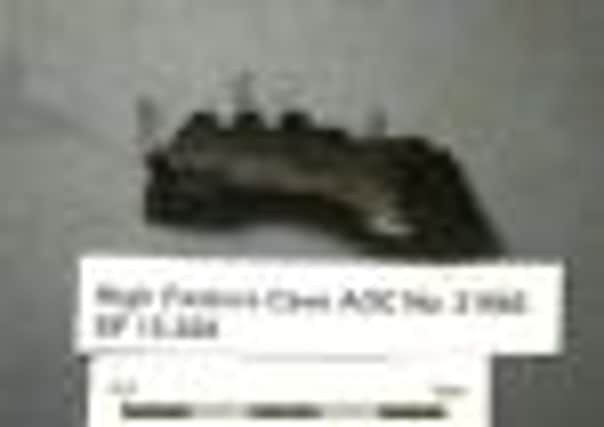Prehistoric stringed instrument found in Skye


Cabinet Secretary for Culture Fiona Hyslop today revealed the small wooden fragment that it is believed comes from a lyre. It has been burnt and broken, but the notches where strings would have been placed are easy to distinguish on the artefact.
Music archaeologists Dr Graeme Lawson and Dr John Purser studied the fragment which was discovered at High Pasture Cave.
Advertisement
Hide AdAdvertisement
Hide AdDr Lawson, of Cambridge Music-archaeological Research, said:


“For Scotland – and indeed all of us in these islands – this is very much a step change. It pushes the history of complex music back more than a thousand years, into our darkest pre-history. And not only the history of music but more specifically of song and poetry, because that’s what such instruments were very often used for.
“The earliest known lyres date from about 5,000 years ago, in what is now Iraq: and these were already complicated and finely-made structures. But here in Europe even Roman traces proved hard to locate. Pictures, maybe: but no actual remains.”
Cabinet Secretary for Culture and External Affairs Fiona Hyslop said:
“This is an incredible find and it clearly demonstrates how our ancestors were using music and ritual in their lives. The evidence shows that Skye was a gathering place over generations and that it obviously had an important role to play in the celebration and ritual of life more than 2,000 years ago.”
The bridge was found during the excavations of High Pasture Cave.
Archaeologist Steven Birch said:
“Access to the natural cave at High Pastures was of prime importance to the people using the site and throughout its use the entrance was modified on several occasions which included the construction of a stone-built stairwell. Descending the steep and narrow steps, the transition from light to dark transports you out of one world into a completely different realm, where the human senses are accentuated. Within the cave, sound forms a major component of this transformation, the noise of the underground stream in particular producing a calming environment.
The project was supported by Highland Council, Historic Scotland and the National Museums of Scotland.